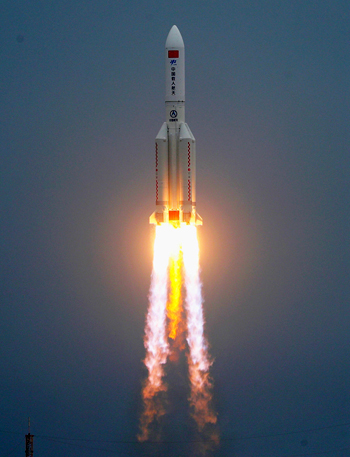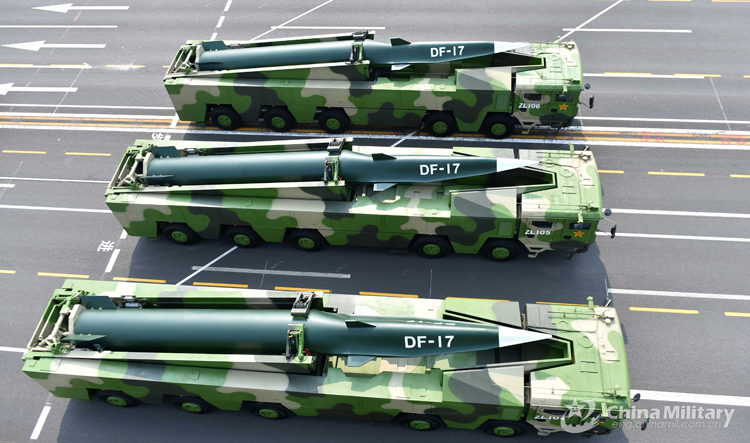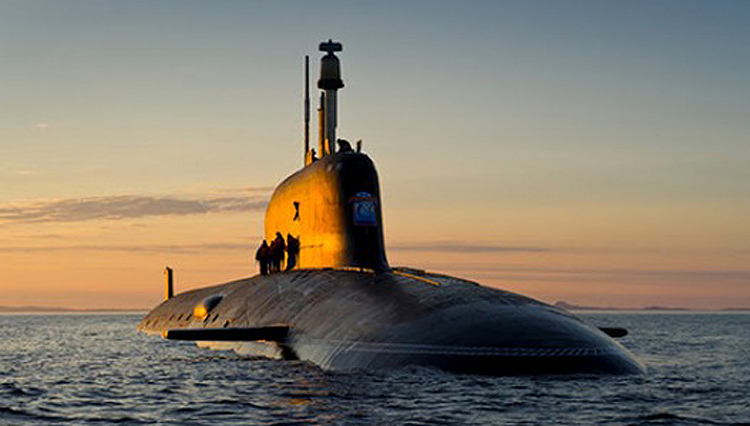INDIAN ARMED FORCES CHIEFS ON OUR RELENTLESS AND FOCUSED PUBLISHING EFFORTS

The insightful articles, inspiring narrations and analytical perspectives presented by the Editorial Team, establish an alluring connect with the reader. My compliments and best wishes to SP Guide Publications.

"Over the past 60 years, the growth of SP Guide Publications has mirrored the rising stature of Indian Navy. Its well-researched and informative magazines on Defence and Aerospace sector have served to shape an educated opinion of our military personnel, policy makers and the public alike. I wish SP's Publication team continued success, fair winds and following seas in all future endeavour!"

Since, its inception in 1964, SP Guide Publications has consistently demonstrated commitment to high-quality journalism in the aerospace and defence sectors, earning a well-deserved reputation as Asia's largest media house in this domain. I wish SP Guide Publications continued success in its pursuit of excellence.
- A leap in Indian aviation: Prime Minister Modi inaugurates Safran's Global MRO Hub in Hyderabad, Calls It a Milestone
- All about HAMMER Smart Precision Guided Weapon in India — “BEL-Safran Collaboration”
- India, Germany deepen defence ties as High Defence Committee charts ambitious plan
- True strategic autonomy will come only when our code is as indigenous as our hardware: Rajnath Singh
- EXCLUSIVE: Manish Kumar Jha speaks with Air Marshal Ashutosh Dixit, Chief of Integrated Defence Staff (CISC) at Headquarters, Integrated Defence Staff (IDS)
- Experts Speak: G20 Summit: A Sign of Global Fracture
China's Nuclear FOBS
According to reports, China undertook not one but two FOBS tests this summer. The FOBS has implications for nations in China's crosshairs particularly for Taiwan since there is no defence against such a weapon presently.
 |
The Author is Former Director General of Information Systems and A Special Forces Veteran, Indian Army |

China has reportedly tested its nuclear fractional orbital bombardment system (FOBS) in August this year. This marks the latest advance in China’s weaponry. The trajectory of FOBS is very different to that of a ballistic missile; ballistic missile follows a parabolic curve with its apogee in space while FOBS are more maneuverable and have a flatter trajectory making them more difficult to track and hit.
On October 18, the Chinese government denied having carried out its nuclear-capable FOBS test in August this year but said the test was for a new space vehicle
Reports said that China launched a Long March rocket in August carrying a hypersonic glide vehicle into low orbit which circled the globe before descending to earth missing the target by over 38 km. The hypersonic missiles can reach speeds of up to 33,600 km/h and can strike anywhere from space within minutes. The report further said this system can overcome US anti-ballistic missile defence systems based in Alaska to shoot down projectiles coming over the North Pole; the Chinese FOBS can fly over South Pole posing a big challenge for the US military.

According to a recent report by the US Congressional Research Service (CRS), Russia, China, the US and North Korea have all test-launched hypersonic missiles; France, Germany, Australia, India and Japan are working on hypersonics; and Iran, Israel and South Korea have conducted basic research on the technology. The report says India operates 12 hypersonic tunnels and can test speeds up to Mach 13. On October 4, 2021, Russia announced that it had test-fired its new Zircon hypersonic missile from a nuclear submarine for the first time. At its annual parade in 2019, China had showcased advanced weaponry including its hypersonic missile ‘DF-17’. In September 2021, North Korea said it had test-fired a newly developed hypersonic missile.

India’s reaction to the Chinese FOBS test in August was that the test itself is not surprising but the timing is. There has been no official reaction by the US but according to foreign media the US intelligence was reportedly taken by surprise albeit surveillance and monitoring of Chinese activities especially defence related including missile development must be top priority for them. Incidentally, the US intelligence was also taken by surprise with India’s nuclear test in Pokhran during May 1998.
In the context of US, the bigger threat is from Russia which is ahead of America in the hypersonic race
On October 18, the Chinese government denied having carried out its nuclear-capable FOBS test in August this year. China’s foreign ministry spokesperson Zhao Lijian acknowledged the launch during a press conference but said the test was for a new space vehicle, saying, “This test was a routine spacecraft experiment to verify the reusable technology of spacecraft, which is of great significance for reducing the cost of spacecraft use. It can provide a convenient and cheap way for humans to use space peacefully”. He also added that while the spacecraft was returning to earth, support equipment separated, burned, and disintegrated upon re-entry.
But China’s denial needs to be viewed in context of the following:
- If the launch was of “great significance for reducing the cost of spacecraft” as Lijian admitted, it is unlikely that China would have kept it secret given Beijing’s penchant to over propagate its achievements as part of propaganda.
- Given the perfection that China’s desires to portray, it would be appalled by the missile missing the target by almost 40 km even though it is no shame being the first test and improvements would follow.
- Given the obsession of Chinese President Xi Jinping for world domination within next few years and the undeclared Cold War with the US, keeping the test secret is no surprise at all especially since China knows that it cannot capture Taiwan without a fight and ultimately conflict with the US appears inevitable.
The US Defense Department (DoD) is planning up to 40 tests over the next five years, pouring more than $1 billion annually into hypersonic research
According to reports of October 20, China undertook not one but two FOBS tests this summer. The FOBS has implications for nations in China’s crosshairs particularly for Taiwan since there is no defence against such a weapon presently. In the context of US, the bigger threat is from Russia which is ahead of America in the hypersonic race. For example the US Aegis missile interceptor systems require 8-10 seconds of reaction time to intercept incoming attacks. In those 8-10 seconds, the Russian Zircon missiles will already have travelled 20 km and the interceptor missiles do not fly fast enough to catch up, according to a defence expert. This has spurred the US for developing a new next generation interceptor, set to debut in 2027 at a cost of about $18 billion while a new American satellite network to monitor missile launches is expected to be up and running only by 2025.
The US Defense Department (DoD) is planning up to 40 tests over the next five years, pouring more than $1 billion annually into hypersonic research. The US tested a scramjet-powered hypersonic recently calling it successful demonstration of the capabilities that will make hypersonic cruise missiles a highly effective tool for war-fighters. However, some analysts believe that Russia has moved ahead because Pentagon has focused on development of maneuverable hypersonic weapons but have shied away when technological hurdles such as propulsion, control, and heat resistance proved difficult.
The NATO Air Force has been working on the scenario of a nuclear war with Russia with 14 countries having participated in a secret exercise
For the US, the combined Russia-China hypersonic threat is a formidable one even as China is working on the expansion of its missile capabilities. Not only is the threat of Chinese missiles coming in the form of nuclear weaponry, but the FOBS weapon; a hypersonic missile flying more than five times the speed of sound, is an even more serious threat. Having an enemy with the ability to rapidly deploy and launch a nuclear warhead poses clear significant threats to the ability with which China can wage war.
The NATO Air Force has been working on the scenario of a nuclear war with Russia with 14 countries having participated in a secret exercise dubbed ‘The Resilient Afternoon’ in Italy that began on October 18; targeting the Arctic, Kaliningrad, Crimea and military facilities of the Central Military District. The exercise included practice dropping of American B61 hydrogen bombs on enemy targets. NATO defence ministers including US Secretary of Defence Lloyd Austin held a two-day defence summit in third week October in wake of Russia having suspended its diplomatic mission to NATO. NATO defence ministers were expected to draw a new master plan to handle possible Russian assault in the Baltic and Black Sea regions.
Interestingly, an analyst opines that China will not wage this type of war against the US, the UK or other European powers, but instead against either their longtime enemy Taiwan or other traditionally hostile nations such as the Philippines and Vietnam, or even India.





